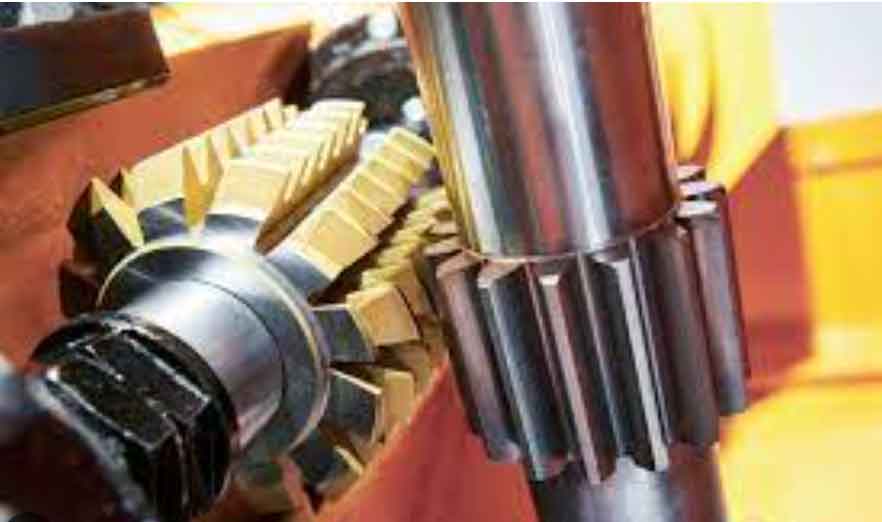Gear transmission mechanisms play vital roles across engineering machinery, machine tools, and automotive systems. Among conical gear types, straight bevel gears offer significant advantages in design simplicity, manufacturing ease, installation convenience, and cost-effectiveness. Traditional manufacturing methods like gear shaping, milling, and broaching suffer from intermittent indexing operations, resulting in low efficiency and discontinuous generation processes. This research proposes a continuous generating method using specialized conical hobs for straight bevel gear production, combining high efficiency with accurate involute tooth profiles.
The parametric tooth surface equation of straight bevel gears is derived from spherical involute formation principles. When a rolling plane undergoes pure rolling motion along a base cone, any point on the generatrix traces a spherical involute curve. The spatial coordinates of any point on the tooth surface in the fixed coordinate system are expressed as:
$$ \begin{cases}
x = l \cdot \sin\theta \cdot \cos(\phi + \varphi) \\
y = l \cdot \sin\theta \cdot \sin(\phi + \varphi) \\
z = l \cdot \cos\theta
\end{cases} $$
where $\phi = \frac{R \cdot \sin\beta}{r_b} \cdot \tan\beta$, $l$ represents the distance from the apex $O$ to the target point, $\theta$ denotes the base cone angle, $R$ is the cone distance, $\beta$ is the rolling angle, and $r_b$ is the base circle radius. The parameter $l$ varies between $R – B \leq l \leq R$, with $B$ being the gear width.
Parametric modeling leverages these equations within SolidWorks’ equation-driven dimension feature. Key design parameters govern gear geometry:
| Parameter | Symbol | Equation |
|---|---|---|
| Transmission ratio | $i$ | $i = \frac{z_2}{z_1}$ |
| Pitch angle | $\delta$ | $\delta = \arctan\left(\frac{z}{z_{partner}}\right)$ |
| Addendum | $h_a$ | $h_a = h_a^* \cdot m$ |
| Cone distance | $R$ | $R = \frac{m \cdot z}{2 \sin\delta}$ |
| Tip angle | $\theta_a$ | $\theta_a = \arctan\left(\frac{h_a}{R}\right)$ |
The gear hobbing process emulates meshing between the workpiece and a conical hob designed as a conjugate gear. The kinematic relationship requires four coordinated axes:
| Axis | Function |
|---|---|
| C1 | Hob rotation (Primary cutting motion) |
| C2 | Workpiece rotation (Generating motion) |
| X | Radial feed |
| Z | Axial feed |
The transformation matrix between coordinate systems is:
$$ \begin{bmatrix} X_4 \\ Y_4 \\ Z_4 \\ 1 \end{bmatrix} = \mathbf{R_3} \cdot \mathbf{R_2} \cdot \mathbf{R_1} \begin{bmatrix} X_1 \\ Y_1 \\ Z_1 \\ 1 \end{bmatrix} $$

Conical hob design incorporates critical geometric parameters: 5-15° rake angle, 10-12° top relief angle, and >3° side relief angle. Structural integrity was verified through FEA analysis showing maximum stress of 1.24 GPa during deep cutting and deformation below 0.002 mm. Modal analysis confirmed operational safety with fundamental natural frequency at 4153.5 Hz, significantly higher than typical machine tool excitation frequencies. Dynamic contact simulation demonstrated progressive stress distribution along the tooth profile during meshing.
Gear hobbing simulations were executed in VERICUT using FANUC 16iM control logic. The conical hob model was imported via STEP interface, and NC code governed synchronized C1-C2 axis rotation with X-Z feed motions. The AUTO-DIFF module compared simulated gears against parametric design models, revealing minimal undercut (≤0.02 mm) and overcut (≤0.015 mm), validating the gear hobbing approach’s accuracy. Key simulation parameters included:
| Workpiece Parameter | Value |
|---|---|
| Pinion teeth | 20 |
| Gear teeth | 21 |
| Module (mm) | 1 |
| Pressure angle (°) | 20 |
This gear hobbing methodology enables continuous generating manufacturing of straight bevel gears on conventional hobbing machines, eliminating specialized equipment requirements. The conical hob design facilitates efficient material removal across the entire tooth profile while maintaining precise involute geometry. Future work will focus on developing integrated parametric design software for gear pairs and experimental validation of physical tooling performance. The approach significantly advances straight bevel gear production technology by combining the efficiency of gear hobbing with conical gear geometric accuracy.
